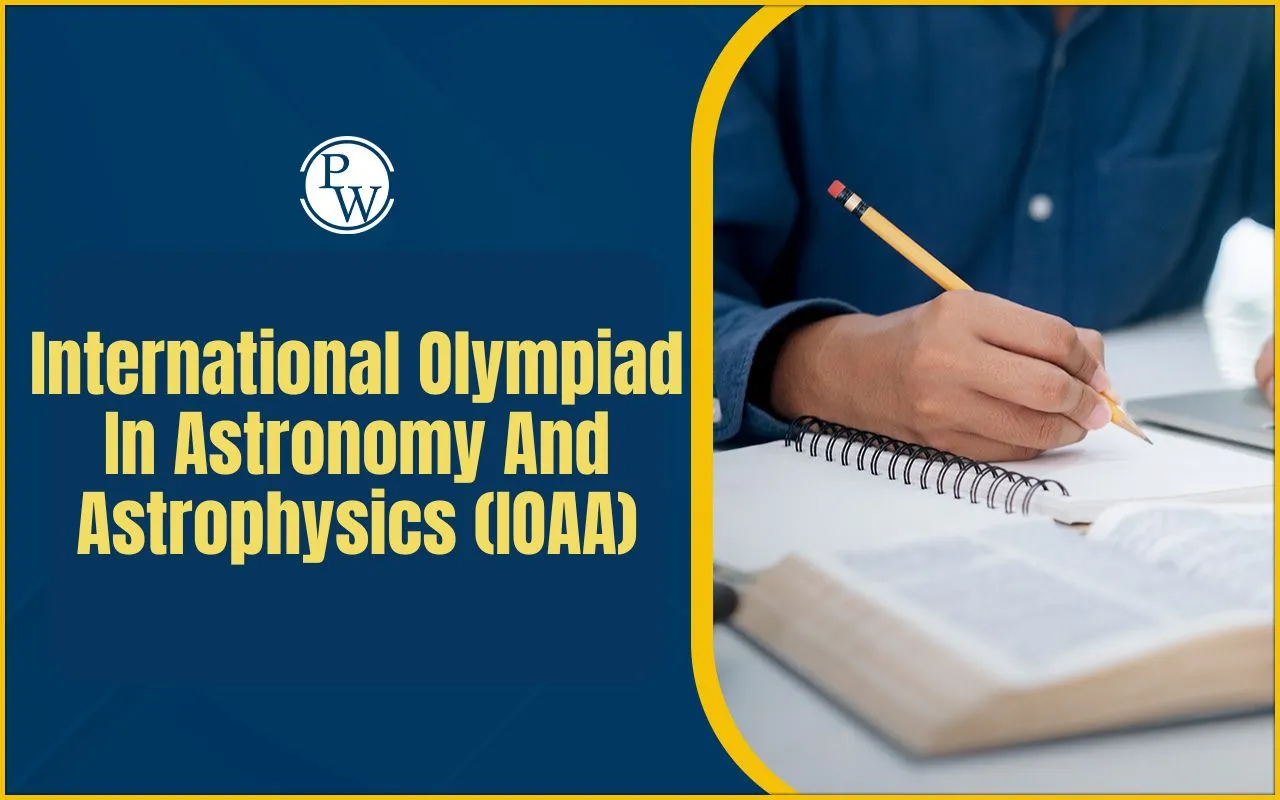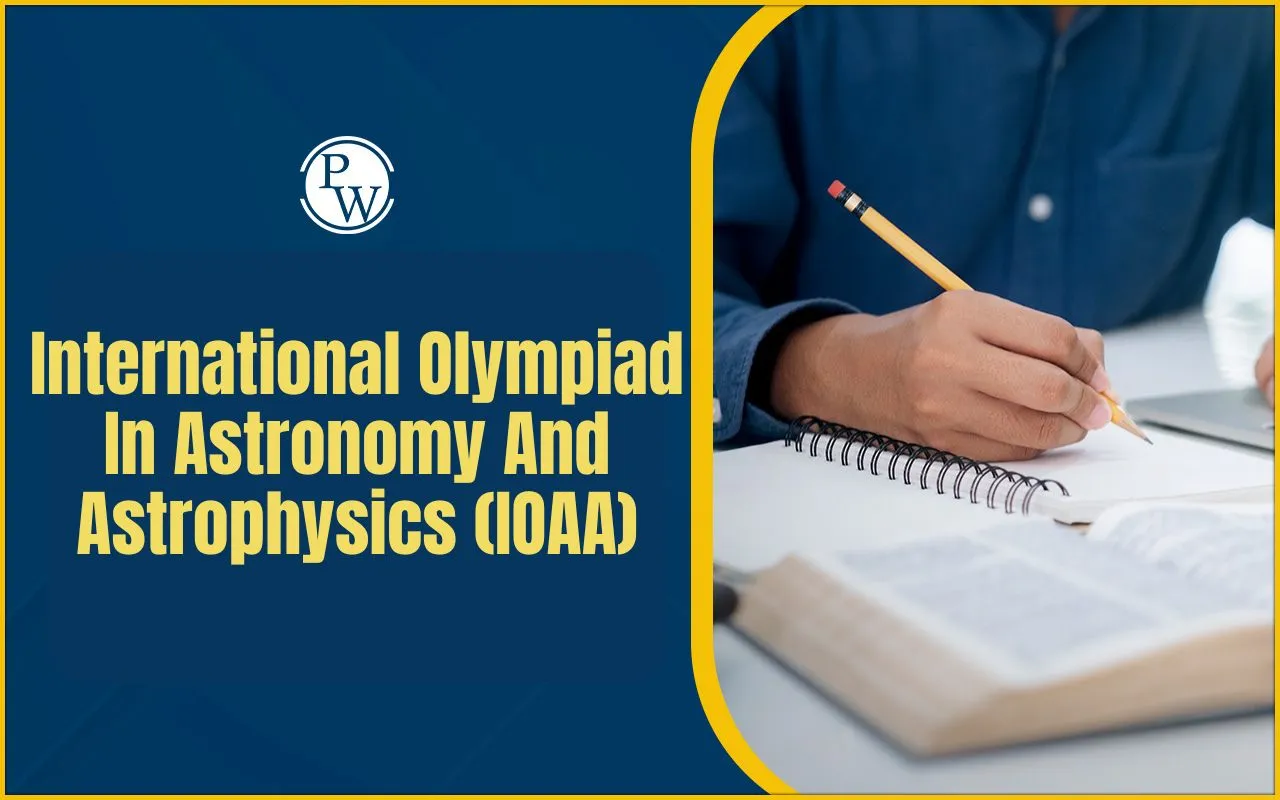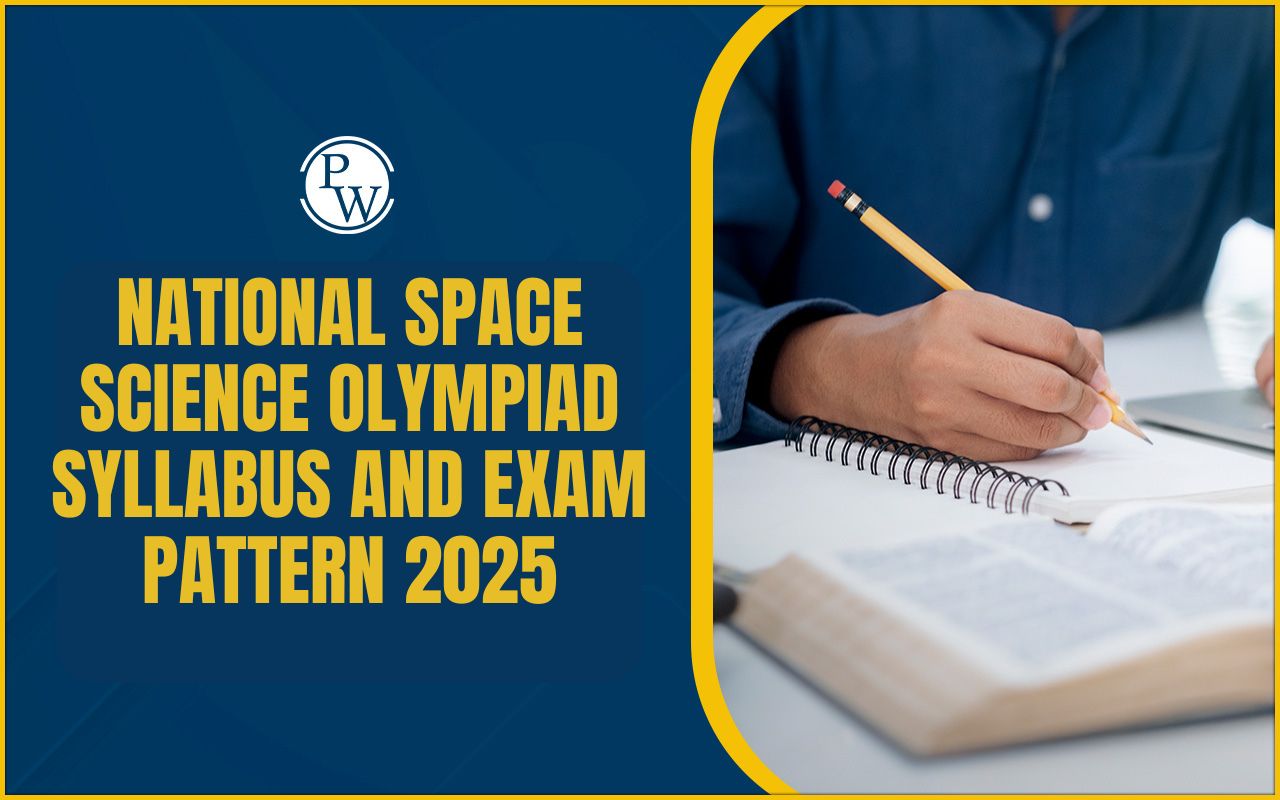

International Olympiad In Astronomy And Astrophysics (IOAA) is a science competition held every year for high school students who love learning about space, stars, and planets. Students from many countries come together to take part in written and practical exams to test their knowledge.
IOAA 2025 will take place in Mumbai from August 11 to August 21, 2025. To take part students must be under 20 years old and be chosen by their country's science olympiad team.
International Olympiad In Astronomy And Astrophysics (IOAA) Overview
Below is an overview of the International Olympiad In Astronomy And Astrophysics 2025 to help students understand the exam better.
|
International Olympiad In Astronomy And Astrophysics (IOAA) Overview |
|
|
Category |
Details |
|
Name of the Exam |
International Olympiad in Astronomy and Astrophysics (IOAA) |
|
Organising Authority |
International Olympic Committee |
|
Organising Country |
Mumbai, India |
|
Eligibility |
Students selected by their national olympiad teams |
|
Competition Format |
Includes theory (written) and observation-based tests in astronomy topics |
International Olympiad In Astronomy And Astrophysics (IOAA) Important Dates
Here are the important details for the IOAA 2025 Olympiad. These dates will help students plan their preparation and avoid last-minute stress.
|
International Olympiad In Astronomy And Astrophysics (IOAA) Important Dates |
|
|
Event |
Event Dates |
|
IOAA 2025 Exam Dates |
11th to 21st August, 2025 |
|
Exam Date for IOAA-Jr |
Will be notified |
|
Date of Registration |
Will be notified |
IOAA Syllabus 2025
The syllabus for the 2025 International Olympiad in Astronomy and Astrophysics covers a wide range of subjects.
It help students in developing a solid grasp of astrophysics and astronomy. Here is the detailed syllabus:
|
IOAA Syllabus |
||
|
Category |
Subcategory |
Details |
|
General Notes |
Requirements |
Students should know basic astronomy concepts. High school-level physics and math are enough no calculus or complex math is needed. |
|
Equipment |
Advanced tools are not required. Any special equipment used will be explained clearly in advance. |
|
|
Theoretical Part |
Basic Astrophysics |
Includes celestial mechanics, electromagnetic theory, thermodynamics, spectroscopy, atomic and nuclear physics. |
|
Coordinates and Times |
Understanding the celestial sphere, spherical trigonometry, and various time systems. |
|
|
Stars |
Study of star properties, interiors, life cycles, and types. |
|
|
Stellar Systems |
Topics include binary stars, exoplanets, star clusters, and the Milky Way. |
|
|
Instrumentation & Space Tech |
Covers telescopes, detectors, and observing techniques across different light wavelengths. |
|
|
Practical Part |
Observations |
Involves using telescopes or simulations, star mapping, and understanding celestial systems. |
|
Data Analysis |
Practice with analyzing data, handling errors, and using basic statistics to understand space-related information. |
|
IOAA Eligibility Criteria
To join the International Olympiad in Astronomy and Astrophysics (IOAA) 2025 students must:
-
Must be under 20 years old on July 1, 2025.
-
Still be in high school (should not have graduated before January 1, 2025).
-
They were chosen by their country's national astronomy olympiad team.
Each country sends one team of up to 5 students along with team leaders (usually teachers or scientists).
IOAA Exam Pattern
Understanding the exam pattern is important to prepare well and manage your time during the test. Below is the overview of the IOAA exam pattern:
Exam Details
-
Total Papers: 2 (One theory, one practical)
-
Duration of Each Paper: 5 hours
-
Type of Exam: Includes both theoretical and practical components
Theory Details:
The theory paper focuses on testing knowledge of astronomy and astrophysics through different types of questions.
|
Exam Pattern for International Olympiad In Astronomy And Astrophysics (IOAA) |
|
|
Section |
Details |
|
Theoretical Portion |
First part of the exam |
|
Rapid Questions |
5 short and quick questions |
|
Intermediate Questions |
5 medium-length questions |
|
Lengthy Questions |
2 or 3 detailed, long-form questions |
Practical Details:
This part checks a student's ability to observe, analyze, and solve problems using real or simulated astronomical data.
|
Exam Pattern for International Olympiad In Astronomy And Astrophysics (IOAA) |
|
|
Aspect |
Details |
|
Practical Paper |
Second part of the exam |
|
Sections |
Divided into multiple parts with specific tasks |
|
Assigned Tasks |
Based on instructions given in the paper |
|
Possible Assignments |
May cover one or all four types listed below |
Topics Covered in Practical Exam:
-
Observation – Sky viewing and identifying celestial object.
-
Paper-Based Practical Problems – Solving printed problems using logic and data.
-
Computer-Based Problems – Using software tools or simulations.
-
Planetarium Simulation – Virtual observation tasks, such as star and constellation identification.
IOAA 2025 Awards & Recognition
The International Olympiad in Astronomy and Astrophysics (IOAA) 2025 rewards students not just for participation but for excellence in both theory and practical skills.
Here is how awards and recognitions are decided:
1. Reference Score (M): This score is key to determining medal cut-offs. It is defined as the lower value between 50% of the absolute top score or the median score of all participants.
2. Medal Distribution:
-
Bronze Medal: Determined using a group of four scores one just above and three just below the reference score (M). The point of largest score jump among these sets the minimum for Bronze.
-
Silver Medal: Calculated using scores around 1.3 times the reference score (1.3M) using the same logic.
-
Gold Medal: Follows a similar approach but uses scores around 1.6M.
3. Honourable Mentions: Participants who do not win medals but excel in either the theoretical or practical components by meeting or exceeding adjusted benchmarks earn honourable mentions.
4. Special Awards:
-
The highest scoring participant overall receives a special prize and certificate.
-
The top two performers in both theoretical and practical sections are awarded certificates and may be given additional prizes.
5. Participation Certificates: Every student who participates in IOAA receives a certificate to honor their effort and representation.
6. Flexibility in Medal Criteria: To maintain fairness the organizers may slightly modify the 1.3 and 1.6 multipliers if there is a notable imbalance in medal allocation. These changes are approved by the International Board.
How to Prepare for International Olympiad In Astronomy And Astrophysics (IOAA)
To do well in this astronomy and astrophysics olympiad, students should:
-
Study the IOAA syllabus.
-
Practice IOAA past papers and sample questions.
-
Improve skills in observation and data analysis.
-
Take part in national astronomy olympiads for selection.
You can find international olympiad of astronomy and astrophysics questions on the official IOAA website or from past editions (like 2018, 2019, and IOAA-Jr 2023).
International Olympiad In Astronomy And Astrophysics FAQs
What is IOAA?
Who can join IOAA?
What does the exam include?
What kind of awards are given?
How are medal winners selected?





